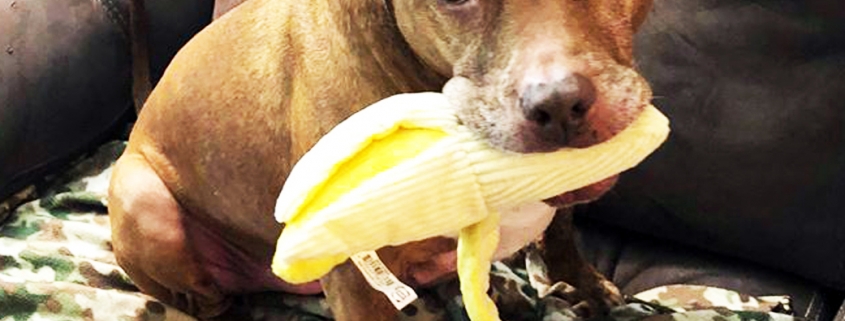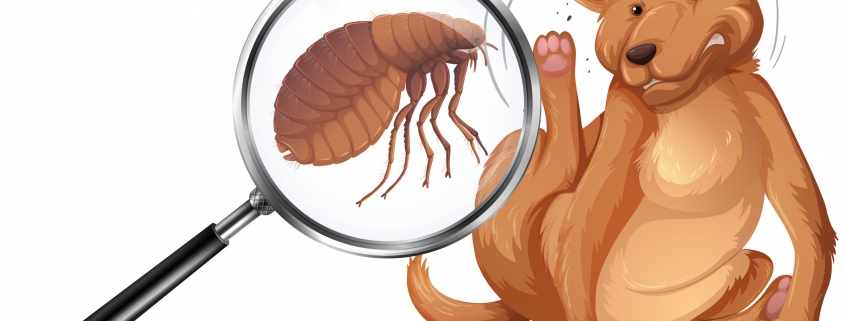By CHERESE COBB
If you’re a dog owner, you probably know that you shouldn’t judge a dog by its breed. But if you’re new to the world of dogs, there’s a huge misconception that every dog breed perfectly matches its standard and profile.
Even if your friend’s Chihuahua acts like a wind-up toy, your neighbor’s Saint Bernard slings saliva on the ceiling or your sister’s Poodle plays the piano, breed isn’t a good predictor of behavior, according to a 2014 study by Bristol University in the United Kingdom.
Researchers poured through 4,000 questionnaires that asked dog owners about their pets’ aggression–whether toward family, toward strangers entering the home or in unfamiliar settings outside.
While just 3 percent reported hostility toward family members, nearly 7 percent said their dogs became forceful when meeting strangers. Then 5 percent also reported violence while meeting people out on walks. The majority of dogs showed aggression in just one of these situations, leading researchers to believe it’s largely taught, not bred.
While American Pit Bull Terriers, Dobermans, German Shepherds and Rottweilers all conjure up images of dangerous, snarling attack dogs due to media hype, their behavior can’t possibly be predicted simply by what they look like. Breed labels are wrong more than 75 percent of the time, and 1 in 3 dogs assessed as a bully breed carry absolutely no DNA of any Pit Bull-type dog. Many dogs are also a mixture of breeds. For example, you may want to assume that your Goldendoodle is the perfect combination of a Golden Retriever’s and a Poodle’s attributes, but that’s not always the case.
Breed labeling is becoming an outdated practice. Often based on myth and misinformation, labels can stick with dogs (and their owners) for the rest of their lives and can mean discrimination, losing their homes or even death threats. Here are five such stories:
I’d Take a Bullet for You
When dog owner Kristin Swoboda adopted Moe from the Wisconsin Humane Society in Racine County, she found everything that she had hoped for in a dog. “He’s my heater, my therapist, my laundry helper (really he just lays on it), and most importantly, my best friend,” she says.
He’s incredibly quirky and playful. “When he gets excited, he runs like a newborn calf, and it makes me laugh hysterically,” she says. “He destroys his squeaky toys within seconds. Then he looks at me with the stuffing still in his mouth like, ‘It wasn’t me.’” He even sits halfway between the couch and ottoman and (not so surprisingly) begs for food. When Swoboda says, “No,” he falls over, looks at her with his sad, brown eyes, and then turns his back to her, refusing to allow her to pet him for a few hours.
“He’d literally take a bullet for any human he comes in contact with,” she says, “but he’s a 7-year-old Pit Bull; so people cross the street to get away from him and even shield their kids as he walks past.” Swoboda once took Moe to Petco to let him pick out his own toy, which was most likely his first, considering that he was abused. He can be rambunctious at times, but he was extremely well-behaved. “We were waiting in line and a woman looked at me and said, ‘If that dog even so much as looks at any of my [five] children, I’ll shoot it,’” Swoboda says. “My heart broke when I looked down at Moe. It makes me sad that there are people who pass over Pit Bulls because they’ve lost the best addition to their families.”
Give a Little Love
At the age of 23 and as a Central Bark Doggy Day Care employee, Erin Hennen quickly realized that she wanted to spend more time with dogs than with people.
“The woman who was grooming my family’s dogs … trained me on how to groom,” she says. “I worked Saturdays or came in on a Friday night for those customers that I really liked.”
Hennen then opened Fancy Pants Pet Salon in Wauwatosa, Wisconsin. She took Anakin, her Yellow Lab-Pit Bull mix, to grooming events. “He was a therapy dog and a blood donor,” she says. “He really just looked like a Yellow Lab with a blocky head. When I mentioned that he had some Pit Bull mixed in, people would pull their hands away.”
For Pit Bull Awareness Day, Hennen stood with her dog on a corner, holding a sign that read “Ask me about my Pit Bull mix.” A man purposely walked toward her, while keeping a fair distance, just to tell her that her dog was dangerous.
When she adopted Washburne and Drax, the struggle for breed acceptance became like trying to play darts with spaghetti. Wash and Drax are both Pit Bull-Bulldog mixes. “They both think that they’re lap dogs. If you give either one the chance, they’ll lay on your chest on the couch,” she says. Drax likes to roll onto his back with his stubby little legs waving in the air and a stuffed toy in his mouth. While Wash is all muscle with a head the size of a basketball, he’s really a scaredy cat. “If there’s a bad wind outside, he’ll hold it rather than go out for a potty break,” she says. The momma’s boys get along with Hennen’s 2-year-old daughter and two cats. “Wash makes me smile every day because of the way he looks at me. I’ve never had a dog look at me with as much love as he does,” she says.
Whenever Hennen takes Wash, Drax and Caesar, her 9-year-old Pomeranian-Maltese mix, on walks, people dash across the street or cover their children with their own bodies. “Most frustrating of all, they would come into my grooming shop and tell me that they don’t want their dogs anywhere near ‘those things’ because they don’t want anything to happen to their pups,” she says. Regulars have realized that “my sweet boys are just sitting nicely in their crates hoping for some love … so there’s nothing to really worry about.”
I Need You Now
In 2011, dog enthusiast Debbie Block adopted Mocha, her Doberman Pinscher, from the Milwaukee Area Domestic Animal Control Commission. When Mocha was diagnosed with cancer at the same time as her 95-year-old mother, she had no intention of adding to her family. “Mocha was an incredible soul who loved everyone and changed our neighbors’ perception of Dobbies. They saw what we saw in her and the breed … a dog that longed to be part of a family.”
“Paco came into our lives right after I lost my mom to [bone] cancer, our Doberman named Sugar to congestive heart failure, and our senior cat—all in one week,” she says. She and her husband, John, were at a fundraiser for the Washington County Humane Society in Fox Lake, Illinois, when they received photos of Paco. He was an hour south at the Doberman Rescue Plus. “My husband looked at me and said, ‘No guarantees,’ after we both read the email. Needless to say when we met him, we were both in tears and knew that he was destined to be a Block,” she says.
Dobermans rarely come into the shelter setting. Even though Paco had a snap test done and was heartworm negative, he later tested as heartworm positive. “The hardest thing ever is to have this boy and want to show him what love truly is, and then you can’t even take him out for road trips,” she says. The 8-year-old Doberman recently got the all clear and visited the Girl Scouts in Jackson, Washington. Once he sniffed them all individually, he plopped on the floor right in front of them and rolled on his back to have his tummy rubbed.
He’s fantastic for getting a person to disconnect from technology. “He’ll do anything to have you pet him: cry, stand in front of the TV, nudge you when you’re on your phone, and literally, knock your tablet out of your hand,” she says. He also has a rock-solid temperament. Recently, he heard a child outside crying and started howling. He dragged his owner to the little girl, nudging her and licking her. She started to laugh and loved on him until all of her tears faded away.
Even though he’s a Canine Good Citizen, she has to pay extra liability insurance because of his breed. “Our insurance agent and an underwriter came to our house to meet with us and our dogs before taking us on as a client,” she says. Block brings Paco with her when she’s doing outreach events for the humane society because it helps break the barriers of what people envision Dobermans to be like. “We’ve actually had people come up to us and say, ‘How dare you bring a vicious dog to an outreach event,’” she says. “Anyone who’s met a Doberman knows they all have the same tendencies: they’ll back their rumps up to the couch and sit on it with two legs up in the air and two on the floor, and they’ll look for the crying child or the handicapped person to bring them a sense of security.”
The Problem is People,
Not Pit Bulls
Since 2010, Mecca’s Pit Bull Rescue in Sheboygan, Wisconsin, has saved more than 40 Pit Bulls. “We can only take in one dog at a time,” says President Mecca Curtice, who’s a dog bite safety educator and certified dog trainer with 30 years of experience. She works with her husband, two police officers who are an hour and a half away and one volunteer in Plymouth, Wis. “It’s not about numbers. We’re a voice for Pit Bulls, and we’re focused on continued care, breed advocacy and positive training.”
Pit Bulls aren’t just family companions. They find missing children and lost dementia patients. They pull wheelchairs, open and close doors and interrupt panic attacks. They also comfort nursing home residents and help kids with disabilities become stronger readers.
But they have a 93 percent euthanasia rate. Only one in 600 of them will find a forever home. Good Pit Bulls under the control of bad people do bad things. “Whether an owner understands the reason for the behavior or not, there’s always an underlying cause to a bite or an attack, [usually pain or fear],” says Sara Enos, the founder and executive director of the American Pit Bull Foundation.
“Breed discrimination is wrong,” Curtice says, “because every dog is an individual.” One of the first dogs taken in by the grassroots nonprofit was named Taisha. The American Staffordshire Terrier wasn’t even a year old yet. She had mange in her system and a litter of six puppies. “She never snapped at me even though I was handling them. She really touched me because she had the strength and courage to live,” she says. “Taisha was adopted by a friend who helped with her rescue and all of her puppies have good homes.”
Curtice uses funds from her One Voice T-shirt and Yankee Candle campaigns to provide veterinary care and 15 to 20-minute training sessions for each dog. “We try to do a DNA test if possible. I do it because I like science, and I want to know what’s going on inside of the dogs,” she says. Mecca’s Pit Bull Rescue recently took in Odin (who’s currently adoptable) and Kayla, who was going to be destroyed at just 5 months old because she lacked socialization. Curtice spends more than 60 hours per week with the dogs, training them to follow verbal commands, eventually without hand signals. “When they’re finally adopted, I can tell their new owners about their behaviors and abilities and their likes and dislikes,” she says.
Never a Dull Moment
The owner and operator of Paws Are Us in Menomonee Falls, Wis., Mary Tran knew that she wanted to be a dog groomer when she was 10 years old. “We used to have these ratty Field Spaniels, and I’d sit on a cul-de-sac and pretend to show and groom them,” she says. “All my sisters and brothers have multiple dogs.”
Tran would rather have a hand-me-down than a puppy. She’s fostered more than 80 dogs, including Debby, a 4-month-old Beagle, that had been in three different homes. Originally named Jasmine, Debby wasn’t a match with anyone that was interviewed. “She crawled on my husband’s lap and fell asleep, and he was just like, ‘Let’s keep her,’” she says. “She was a hard dog in the beginning to own because my husband worked third shift, and I couldn’t crate her. I had to take her with me everywhere.”
Originally reactive to other dogs, Debby would get stiff and scrunch up her nose before mumbling, “Ra-ra-ra-ra.” Tran taught her to walk away and sit in her bed at the grooming shop. She’s also very intuitive and really understands other dogs. “If owners aren’t going to control their dogs, she expresses her opinion: they need to stay out of her space. If I have friends that have dogs, she’s friends with them,” she says. “[After 12 years,] Debby is very in tune with me. If I’m worried, she’s worried. Out of all of the dogs that I’ve ever had, she really knows how I’m feeling.”
“Most people I know say, ‘I had a beagle…once.’ You either love them or hate them,” she says. Beagles are the eighth most surrendered breed, according to a 2015 study by rescuegroup.org. Originally bred to be hunting companions, they have an incredible sense of smell and this often leads them to wander far from home when they’re hot on the trail of something, like a squirrel or bird. “Debby knows how to unlock the car door and open it,” she says. “One time, I wasn’t done at my shop yet and Debby jumped out of the sunroof.” Because Beagles are skilled escape artists, they often find themselves abandoned by their owners, or they may run away on their own.
Those who choose a Beagle as a regular family pet might surrender them to shelters when they prove difficult to train. Some people say that Beagles aren’t very intelligent, but Debby can spin and give high fives and high 10s. “If you ask her, ‘What does a Beagle say?’ she howls,” Tran says. “If you put your thumb up, she jumps into the air. I’m trying to teach her to sneeze on command.” Debby participates in barn hunting and nose work “She’s qualified a few times [in barn hunting], but as soon as she finds the rat, she turns her nose away like, ‘I’m too good for this,’” she says. “She competes if I ask her to, but then she’ll go, ‘What’s in it for me?’ She knows whenever there are treats in my pockets. She follows me around all day long … and eats the treats out of my friends’ coat pockets as soon as they put them down.”
When it comes to hounds, you have to make them think that everything is their idea. “They have no patience and the common sense of a 2 year old,” she says. Whether they’re finding a rabbit in a hole or secretly snacking on the kibble in your trunk, you can’t tell them what to do.
“You’ve got to figure them out—just like any dog,” she says. At Debby’s last nose work competition, she was prancing through the crowd, and they were like, “She’s so cute and petite.” “Debby knows how to get reactions. It’s not a bad thing … [because] there’s never a dull moment with my Beagle.”
Removing Labels
Lindsey Huffman, the director of Shenandoah Valley Animal Services in Lyndhurst, Virginia, asked all of her employees to write down the breeds of all of their shelter dogs. Every one of them was different. “Basically, we were just guessing, and it was unfair,” she says. “We stopped labeling dogs about a year and a half ago.”
“While breeds are an aspect of a dog, they don’t make up everything about that dog,” says Michael Morefield, the marketing and communications manager for the Arizona Animal Welfare League. Whether your dogs come from a puppy mill, a responsible dog breeder or a shelter, their personalities, their temperaments and their life experiences really make up who they are.
“When you remove breed labels, you open the door to possibility. You have a chance to fall in love without being inhibited by breed,” says Cheryl Schneider, the Director for Williamson County Regional Animal Shelter. “Instead, fall in love by listening to your heart.”
Disclaimer: Pit Bull isn’t a breed of dog recognized by any of the kennel clubs, and there’s no agreed upon definition for what a Pit Bull actually is. As an umbrella term, it may refer to American and English Bulldogs, Staffordshire Bull Terriers, American Staffordshire Terriers, American Pit Bull Terriers, or any of their mixes.





